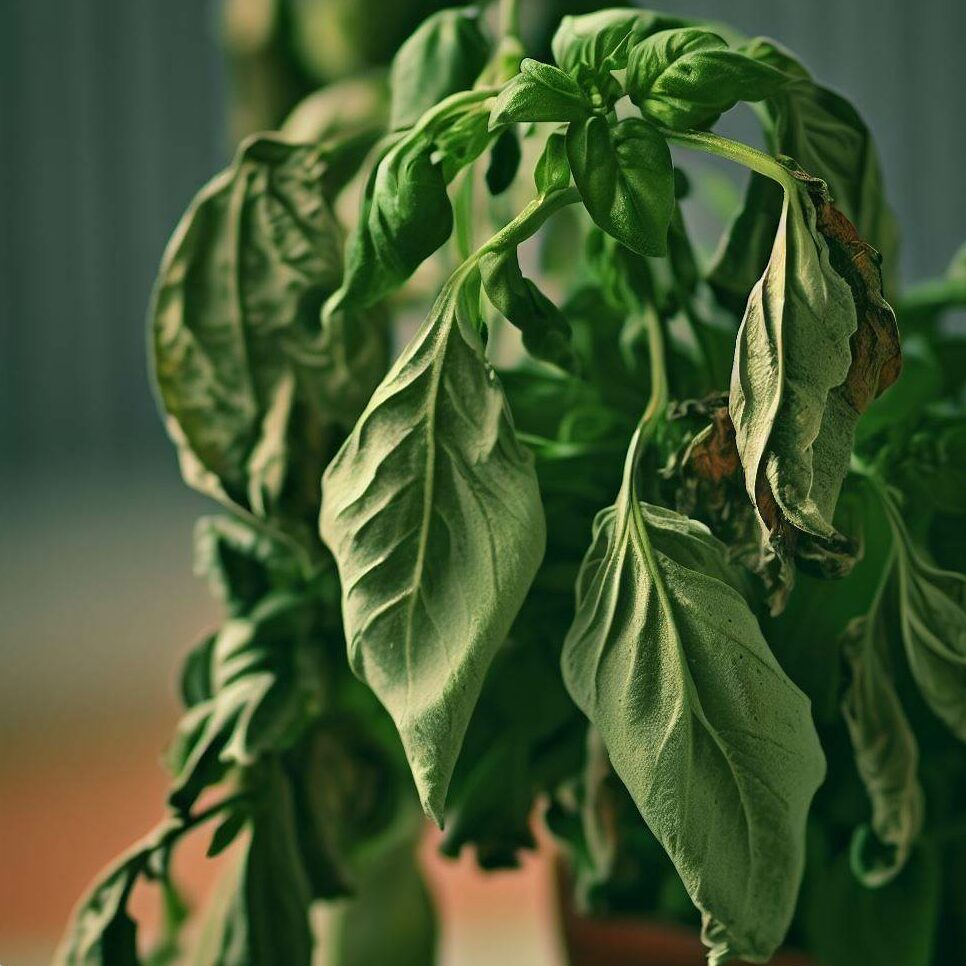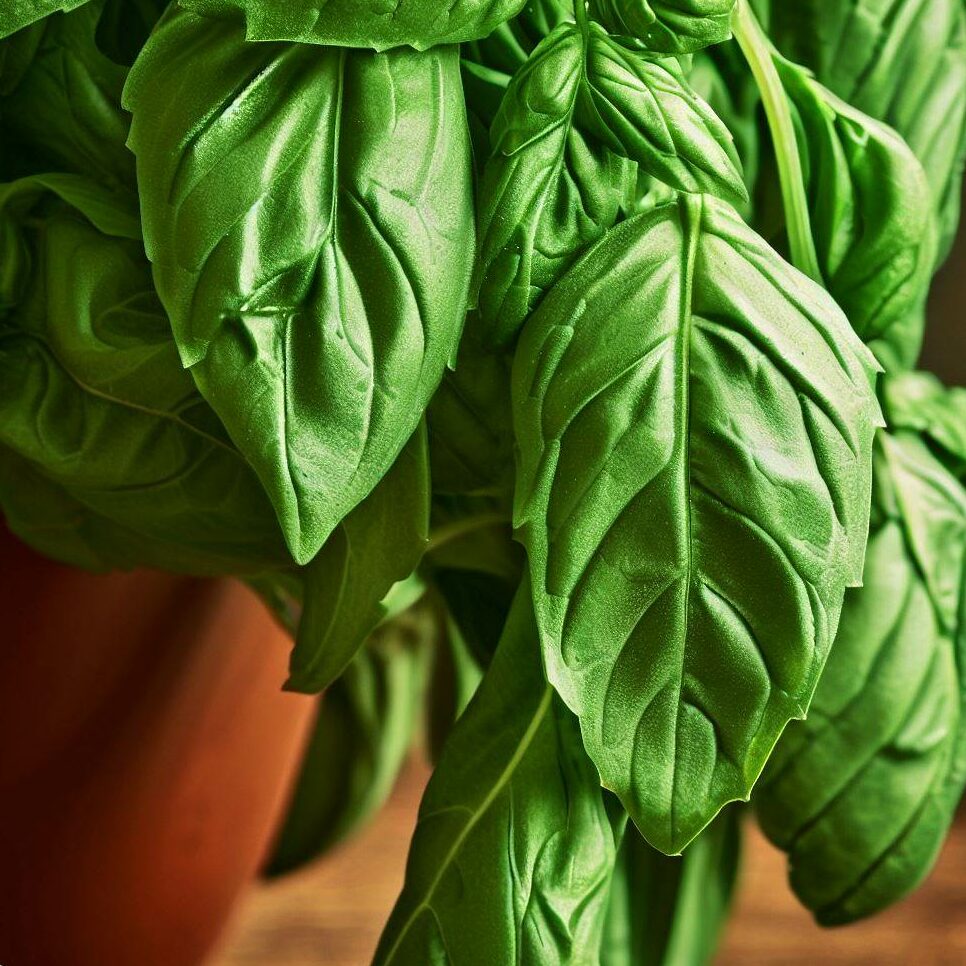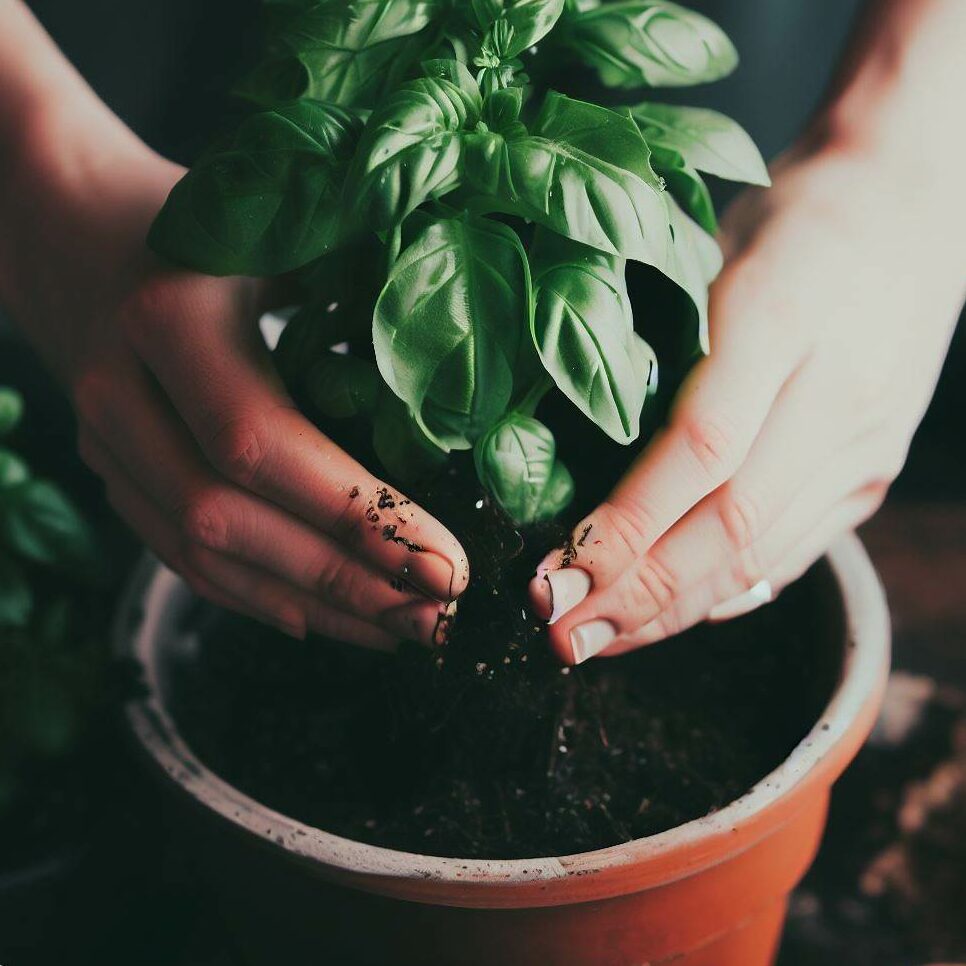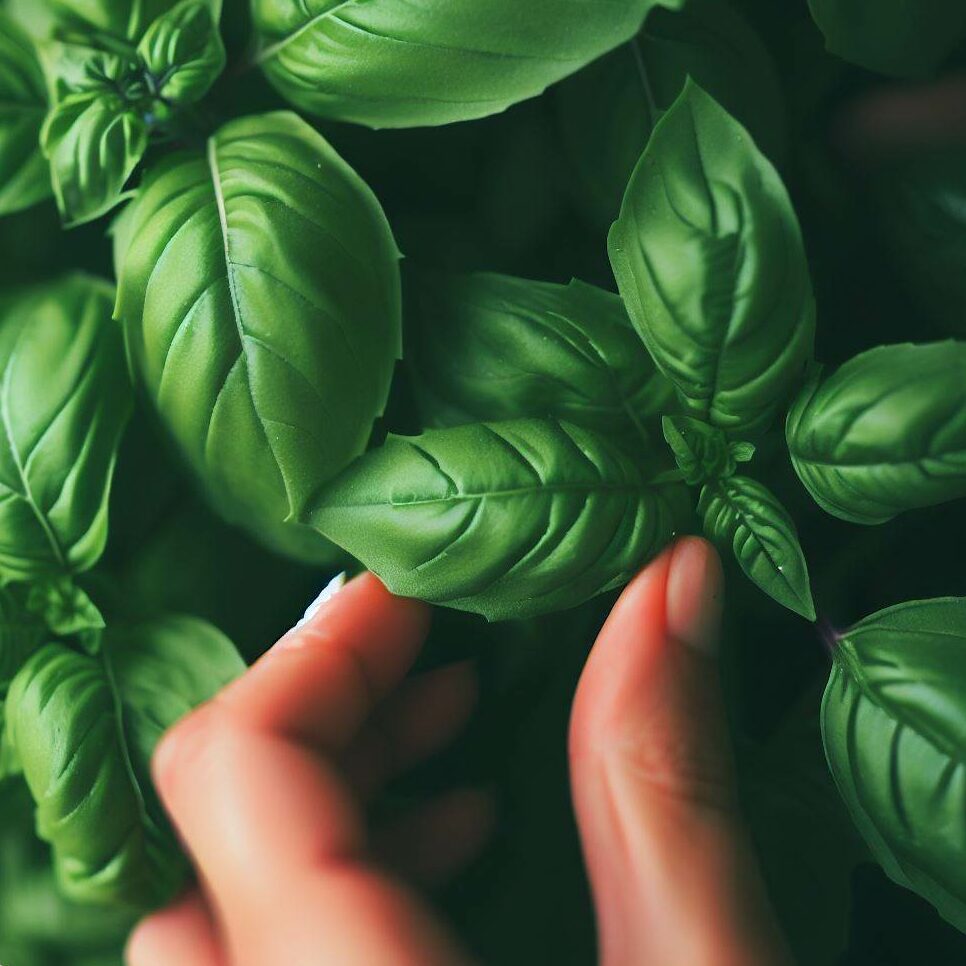If you’ve ever moved a basil plant or started growing basil from seed and watched it wilt in despair, you’ve likely encountered a common gardening hurdle: basil transplant shock. This phenomenon occurs when our beloved basil plants, whether mature or newly sprouted from seed, are uprooted and replanted, causing them to react rather dramatically to their new surroundings. Transplant shock can manifest as wilting, drooping leaves, or a general look of “I’ve seen better days” from your basil. It’s a plant’s way of saying, “I’m not so sure about this move.” But fear not, because with the right knowledge and techniques, you can help your basil adjust smoothly to its new home.
Basil transplant shock is a condition that occurs when a basil plant is moved from one location to another, causing stress due to changes in its growing conditions. Signs of transplant shock include wilting, drooping leaves, and stunted growth. To prevent this, it’s crucial to acclimate the plant to its new environment gradually, provide proper watering, and protect it from adverse weather. With proper care, the plant should recover from transplant shock within a few days to two weeks.

Why Proper Transplanting Techniques Matter
Transplanting isn’t just about moving a plant from point A to point B. It’s a delicate process that requires a gentle touch and a good understanding of your plant’s needs. Proper transplanting techniques are crucial to ensure your basil plant thrives in its new environment and continues to provide those fragrant leaves we all love.
🌿 Basil Booster: Think of transplanting like moving to a new house. It’s a big change, and just like us, our plants need time to adjust and settle in. Patience and care are key! 🌿
So, if you’re ready to become a master of basil transplantation and avoid the dreaded transplant shock, you’re in the right place. Let’s dive in!
Understanding Basil Transplant Shock
Before we delve into the solutions, let’s first understand what we’re dealing with. Basil transplant shock is a term used to describe the stress a basil plant experiences when it’s moved from one location to another. This could be from an indoor pot to your outdoor garden, or even just a move to a bigger pot. It’s a big change for your basil, and like any of us, it might need a moment (or a few days) to adjust.
Signs of Basil Transplant Shock
So, how do you know if your basil is going through transplant shock? Here are some telltale signs:
- Wilting or drooping leaves
- Stunted growth
- Yellowing leaves
- Leaf drop
If your basil is showing any of these symptoms after a transplant, it’s likely experiencing transplant shock.
🌿 Basil Booster: Remember, plants can’t tell us they’re feeling stressed, but they can show us. Keep an eye on your basil after transplanting and look out for these signs. 🌿

Why is My Basil Wilting After Transplant?
You’ve moved your basil to a new pot, and now it’s wilting. What gives? Well, when a basil plant is transplanted, its root system is often disturbed. This can lead to a temporary disruption in the plant’s ability to take up water and nutrients, leading to wilting. Additionally, the change in light, temperature, and humidity conditions can also stress the plant, causing it to wilt.
But don’t worry, this wilting is usually temporary. With the right care, your basil can bounce back from transplant shock and thrive in its new home. Let’s explore how to do just that in the next section.
How to Prevent Basil Transplant Shock
Prevention, as they say, is better than cure. This holds true for basil transplant shock as well. By taking a few precautionary steps, you can help your basil adjust to its new home with minimal stress. Let’s explore how.
Acclimating the Plant to Its New Environment
Imagine being suddenly moved to a new city without any warning. Sounds stressful, right? That’s exactly how your basil feels when it’s abruptly moved to a new location. To ease this transition, it’s important to acclimate your basil to its new environment.
Start by placing your basil in a sheltered spot with indirect sunlight. Gradually increase the amount of sunlight it receives over a week or two. This slow introduction to its new environment can help reduce the shock of the move.
🌿 Basil Booster: If you’re moving your basil outdoors, start this process a week before the last expected frost. This gives your basil a head start on acclimating to outdoor conditions. 🌿
Watering Basil After Repotting
Watering is a crucial part of the transplanting process. After repotting, give your basil a good soak. This helps settle the soil around the roots and ensures your basil has enough moisture to start its new life.
But be careful not to overwater. Basil likes well-drained soil, and too much water can lead to root rot. A good rule of thumb is to water when the top inch of soil feels dry to the touch.
🌿 Basil Booster: Remember, it’s better to water deeply and less frequently than to give your basil a little water every day. This encourages the roots to grow deeper, resulting in a stronger, more resilient plant. 🌿
Does Basil Transplant Well?
Yes, basil does transplant well, provided it’s given the right care. Basil is a hardy plant and can adapt to new environments with relative ease. The key is to minimize stress during the transplant process and provide the right aftercare.
Should You Water Basil After Repotting?
Absolutely! Watering after repotting is crucial. It helps settle the soil and provides the hydration your basil needs to start growing in its new home. Just remember not to overdo it. Too much water can be as harmful as too little.
With these tips in mind, you’re well on your way to preventing basil transplant shock and helping your basil thrive in its new home.

Solutions to Basil Transplant Shock
Despite our best efforts, sometimes basil transplant shock can still occur. But don’t worry, it’s not the end of the world, or your basil plant. Here are some solutions to help your basil recover and thrive.
Proper Watering
Watering is crucial when it comes to reviving a wilting basil plant. After transplanting, the basil plant needs a good amount of water to help it settle into its new home. However, it’s important to strike a balance. Overwatering can lead to root rot, while underwatering can leave your basil thirsty.
So, how do you strike this balance? Water your basil when the top inch of soil feels dry to the touch. And when you water, make sure to water deeply. This encourages the roots to grow deeper, resulting in a stronger plant.
🌿 Basil Booster: If you’re unsure whether your basil needs water, stick your finger into the soil. If it feels dry up to your first knuckle, it’s time to water. 🌿
Protection from Adverse Weather
Basil is a sun-loving plant, but too much of a good thing can be harmful. If your basil is wilting after being transplanted outdoors, it might be getting too much sun or wind. Consider moving your basil to a sheltered spot where it can get a break from the harsh elements.
Similarly, if temperatures drop, your basil might need some protection. Consider bringing your basil indoors or covering it with a frost cloth on cold nights.
Adding Mulch
Mulch is a gardener’s best friend. It helps retain moisture in the soil, keeps the roots cool, and can even suppress weeds. Adding a layer of mulch to the surface of the soil can help your basil recover from transplant shock.
Choose an organic mulch like compost, straw, or wood chips. These will break down over time, adding nutrients to the soil and improving its structure.
🌿 Basil Booster: Keep the mulch a few inches away from the stem of your basil plant to prevent rot. 🌿
Giving the Plant Time to Recover
Patience is a virtue, especially in gardening. If your basil is wilting after transplant, it might just need some time to adjust to its new home. Continue to provide it with the right care, and with time, it should bounce back.
Remember, plants are resilient. With the right care and a little patience, your basil can recover from transplant shock and thrive in its new home.
So, the next time you’re wondering “how to revive wilting basil plant,” remember these tips. Happy gardening!
Common Questions About Basil Transplant
Transplanting basil can bring up a lot of questions, especially when things don’t go as planned. Here are some common questions and their answers to help you navigate through the process.
How often do you water basil after repotting?
After repotting, basil plants need to be watered thoroughly. The soil should be kept consistently moist, but not waterlogged. A good rule of thumb is to water when the top inch of soil feels dry to the touch. This could be every 2-3 days, depending on the weather and soil type.
🌿 Basil Booster: Always water basil in the morning to reduce the risk of fungal diseases. 🌿
Can you transplant mature basil?
Yes, you can transplant mature basil, but it requires a bit more care than transplanting young plants. Mature plants have larger root systems that can be damaged during the transplant process. Be sure to dig a wide enough hole to accommodate the entire root system and water thoroughly after transplanting.
Why is my basil drooping after repotting?
Basil may droop after repotting due to transplant shock. This is a common response to the sudden change in environment. However, with proper care and time, your basil should recover.
Can you revive a wilted basil plant?
Yes, wilted basil plants can often be revived with proper watering and care. If your basil plant has wilted due to underwatering, giving it a good soak can help it bounce back.
Why has my basil plant wilted overnight?
Basil plants can wilt overnight due to a variety of reasons, including overwatering, underwatering, or a sudden change in temperature. Check the soil moisture and make sure your basil isn’t exposed to extreme temperatures.
Why is my indoor basil plant wilting?
Indoor basil plants can wilt due to insufficient light, overwatering, or dry air. Make sure your basil is getting at least 6 hours of sunlight and is not sitting in waterlogged soil.
Why is my basil plant wilting and turning brown?
If your basil plant is wilting and turning brown, it may be suffering from a disease or pest infestation. Check the leaves for signs of pests or disease and treat accordingly.
Remember, every plant is unique and may require slightly different care. When in doubt, observe your plant and adjust your care routine as needed.

How to Save a Dying Basil Plant
Seeing your basil plant wilt or look like it’s on the verge of death can be disheartening. But don’t lose hope just yet! Here are some steps you can take to revive your wilting or dying basil plant.
Step 1: Diagnose the Problem
First, try to figure out what’s causing your basil plant to wilt. Is it getting too much or too little water? Is it getting enough light? Are there signs of pests or disease? Once you’ve identified the problem, you can take the appropriate steps to address it.
🌿 Basil Booster: Yellow leaves often indicate overwatering, while brown, crispy leaves can be a sign of underwatering or too much sun. 🌿
Step 2: Adjust Your Care Routine
Based on your diagnosis, make the necessary adjustments to your care routine. This could mean watering less or more, moving the plant to a sunnier or shadier spot, or treating for pests or disease.
Step 3: Be Patient
Plants don’t recover overnight. Give your basil plant some time to bounce back. With proper care and a little patience, your basil plant can recover and thrive once again.
Remember, the key to saving a dying basil plant is to diagnose the problem accurately and adjust your care routine accordingly.
Conclusion
In this article, we’ve explored the phenomenon of basil transplant shock, its signs, and how to prevent it. We’ve also delved into solutions to help your basil recover from transplant shock and answered some common questions about basil transplanting. Lastly, we’ve discussed how to save a wilting or dying basil plant.
Remember, the key to successful basil transplantation lies in understanding the needs of your plant and adjusting your care routine accordingly. With the tips and techniques discussed in this article, you’re well-equipped to help your basil plants thrive, even after a move. So, go ahead and give your basil the best care it deserves!
